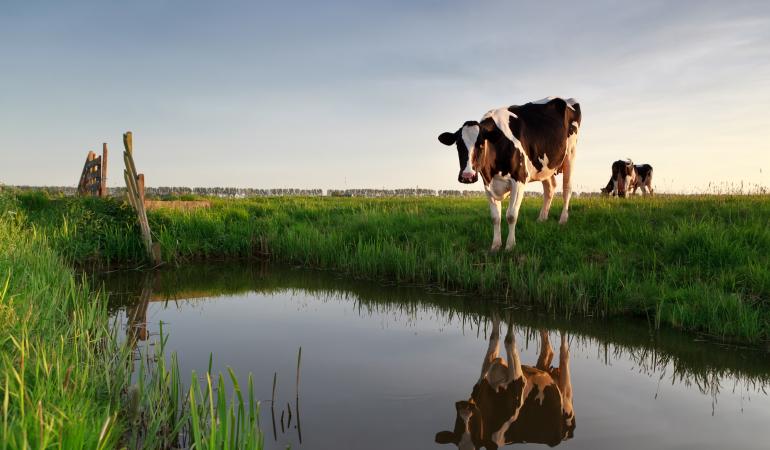
Nitrate concentrations in groundwater on ‘derogation farms’ throughout the Netherlands fell in 2022. One of the reasons for the decrease is that 2021 was a relatively wet year. However, nitrate levels still exceeded the limit value in the Sand and Loess Region. In 2021, the surplus of nitrogen in the soil was at its lowest level since the start of the derogation monitoring network in 2006. This is indicated in the annual derogation report compiled by RIVM and Wageningen Economic Research. Under certain conditions, farmers may spread more animal manure on their land than the EU (European Union) Nitrates Directive allows. This is called ‘derogation’. In September 2022, the European Commission decided that this special exception for the Netherlands will end in 2026.
Still too much nitrate in groundwater in many places
In 2022, nitrate concentrations in groundwater decreased in all regions. In the south and east of the Sand Region, the average nitrate concentration in the top metre of groundwater was 51 milligrams per litre. Although this was lower than in 2021, it is above the limit value of 50 milligrams per litre. Nitrate levels in this part of the Sand Region rose sharply after 2017, likely due to the drought from 2018 until 2020. In the north of the Sand Region, the average nitrate concentration fell to 23 milligrams per litre in 2022 and thus remained below the limit value.
The nitrate concentration in the Loess Region decreased slightly to 51 milligrams per litre in 2021, but remained above the limit value of 50 milligrams per litre. Following a sharp increase in recent years, the nitrate concentration in the Clay Region decreased to 18 milligrams per litre in 2022. The lowest concentration was measured in the Peat Region: 9 milligrams per litre in 2022.
Causes of the decrease in nitrate concentrations
The weather has a major impact on the leaching of nitrogen into groundwater in the form of nitrate. The year 2021 (the year before the measurement year 2022) was relatively wet. This may have led to dilution and hence a decrease in nitrate concentrations. Nitrate also breaks down better under wet conditions. This reduces the amount of nitrate that ends up in groundwater. The effect of the weather in recent years can be seen not only on derogation farms, but on other farms as well, according to the 2020 Nitrate Report.
Decrease in nitrogen soil surplus
Grassland farms have been using animal manure more efficiently to grow their crops. This has led to less nitrogen remaining in the soil and leaching into the groundwater in the form of nitrate. In 2021, the surplus of nitrogen in the soil was 144 kilograms per hectare. This was the lowest level since measurements began in 2006.
Derogation to end in 2026
The aim of the EU (European Union) Nitrates Directive is to protect water against pollution by excess nutrients from agricultural sources. Every four years, RIVM publishes the Nitrate Report on water quality in relation to agricultural practices.
In the Netherlands, certain grassland farms are permitted to use more manure from grazing animals on their land than the amount specified in the Nitrates Directive. This is called ‘derogation’. This annual report by RIVM and Wageningen Economic Research is one of the conditions the European Commission has set for the Netherlands under the derogation decision. In September 2022, the European Commission decided that this exception for the Netherlands will end in 2026.